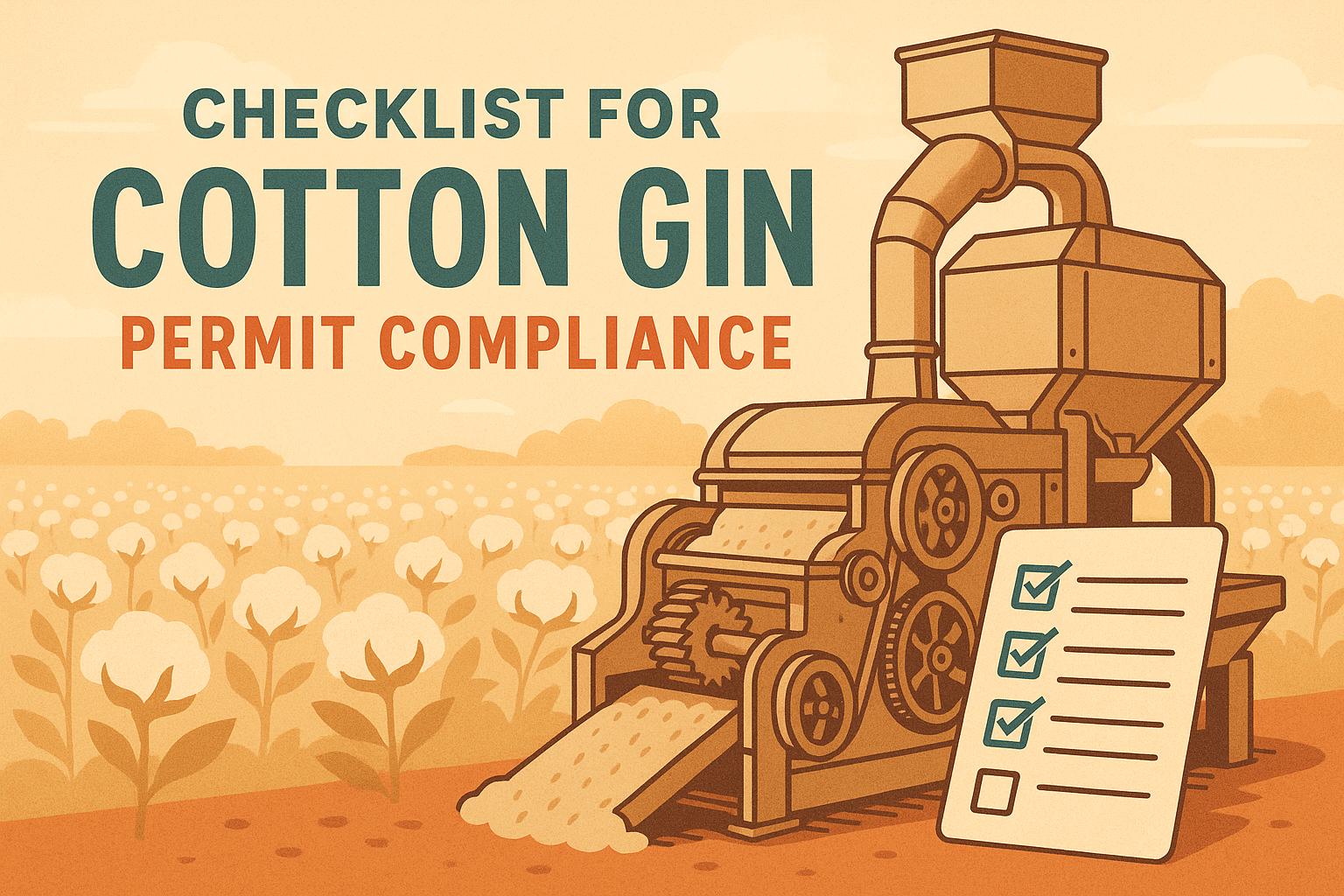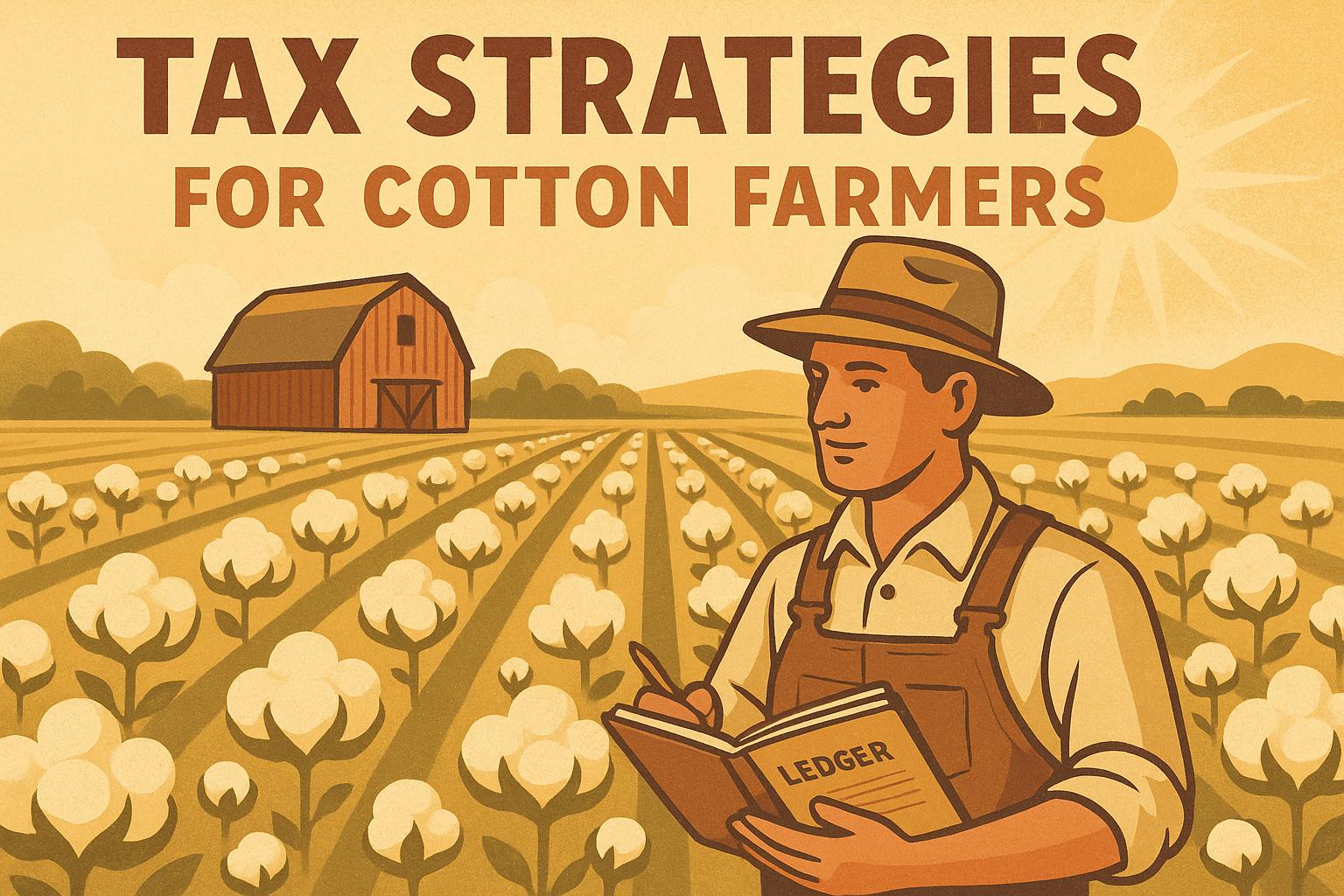Automation is transforming U.S. cotton ginning as stricter regulations push operators to modernize. Here's what you need to know:
- Efficiency and Cost Savings: Automated systems improve throughput by 8–9%, cut labor dependency by 90%, and reduce operational costs per bale by 40%.
- Regulatory Pressure: New EPA air standards, USDA quality rules, and labor laws are driving the shift to automation.
- High Costs: Automation setups range from $2,700 for basic systems to $1.2 million for industrial-scale solutions, with retrofit kits costing $15,000–$25,000.
- Energy and Labor Savings: Automated gins report up to 19% lower energy costs and $165,000 annual labor savings.
- Cotton Quality Gains: Advanced systems improve fiber uniformity by 8% and compliance with global standards by 98.7%.
Key takeaway: Automation isn't just about meeting regulations - it's a path to lower costs, better quality, and safer operations.
| Automation Impact | Key Benefits |
|---|---|
| Throughput | +8–9% |
| Labor Dependency | -90% |
| Energy Savings | -19% |
| Operational Costs (per bale) | -40% |
| Cotton Quality | +5.3% premium-grade production |
Dive into the article to explore the challenges, costs, and steps to modernize your cotton gin operations.
New Policies Pushing Automation
Government Funding Programs
Currently, there are no government funding programs or incentives available to assist with the shift to automation in cotton ginning. Without this financial backing, operators must look for other funding solutions to meet increasing regulatory requirements.
Cotton Ginning Automation Plant, Raw Cotton Ginning Machine, India
Automation Setup Barriers
Cotton gin operators encounter financial, technical, and workforce challenges when implementing automation. These obstacles range from high upfront costs to integrating new systems and preparing staff for the transition.
Equipment Costs
One of the biggest hurdles is the expense of automation, especially with regulatory demands pushing for upgrades. Basic automated systems cost between $2,700 and $3,000, while larger, industrial-scale solutions can range from $500,000 to $1,200,000. Because of these steep costs, many operators turn to external funding sources to make automation feasible.
| System Type | Cost Range | Processing Capacity |
|---|---|---|
| Entry-Level | $2,700 - $3,000 | 3-5 bales/day |
| Medium-Scale | $7,000 - $14,000 | 10-15 bales/day |
| Industrial | $500,000 - $1,200,000 | 15+ tons/hour |
System Compatibility
Another challenge is getting new automation systems to work with older equipment, which affects 68% of gin operators. Legacy machinery often requires substantial updates to integrate modern controls. Common issues include connecting control systems, adding sensors, and ensuring data communication protocols match.
Retrofit kits can help by upgrading existing equipment rather than replacing it entirely, but they come at an extra cost - typically $15,000 to $25,000 per project.
Staff Training Needs
Automation isn’t just about hardware - it also requires a prepared workforce. According to USDA data, proper training can improve operational quality by up to 22%. Effective programs usually include 2–3 weeks of hands-on instruction, partnerships with technical colleges for ongoing support, and detailed operational guides to ensure employees are ready to handle the new systems.
sbb-itb-0e617ca
Automation Results
Automation has helped operators overcome setup challenges while delivering major gains in efficiency and cost savings.
Power Usage Results
Automated systems like VFDs (Variable Frequency Drives) and smart moisture controls have significantly reduced energy use. For example, a gin in Lubbock, Texas, reported a 19% drop in annual electricity costs in 2024 after installing VFDs on conveyor motors. This change saved the facility around $28,000 annually and reduced motor power consumption by 15–20%. These energy savings also complement reductions in labor costs.
Staff Cost Savings
Labor costs have also seen a sharp decline thanks to automation. A Mississippi gin using Lummus Corporation's AutoBale system cut its seasonal workforce from 12 to 7 employees, saving over $165,000 annually in wages and benefits. The facility also saw a 12% drop in insurance premiums due to fewer workplace injuries. In another case, a North Carolina gin processing 60,000 bales annually implemented ZENR Robotics' Seed Cotton Analyzer. This system eliminated two quality-control positions while achieving a 99.2% defect detection accuracy rate. Lower labor costs and safer working conditions have led to better cotton quality as well.
Cotton Quality Gains
Automation has also improved cotton quality. A California gin using John Deere's Advanced Fiber Quality System increased premium-grade production by 5.3%, earning an extra $4.50–$6.00 per bale and improving fiber uniformity by 8%. Additionally, USDA-AMS data shows that automated classing systems, like Uster Technologies' HVI 1000, achieve 98.7% compliance with China's CNFTA moisture standards (8.5% max), compared to just 89% compliance in manual operations.
Another compelling example comes from a Georgia gin that used a USDA Rural Development Grant to cover 35% of its $1.2 million automation upgrade. This investment led to $180,000 in annual energy savings, $240,000 in yearly labor cost reductions, and a return on investment in just 3.2 years. Beyond cost and quality improvements, automation has also boosted safety. Some gins report that advanced fire suppression systems have cut equipment-related fires by up to 67%, highlighting the broader benefits of modernized operations.
Steps for Gin Operators
Finding Financial Aid
Securing financial aid can significantly ease the costs of automation. Programs like the USDA's Environmental Quality Incentives Program (EQIP) offer grants that cover up to 50% of equipment expenses, with a cap of $125,000. States like Texas and Georgia also provide tax credits of 10–15% for automation investments exceeding $200,000. To improve your chances of approval, work with USDA-certified providers and consider using the NRCS Conservation Activity Plan (CAP) framework. Applications following this framework enjoy a 73% approval rate, compared to just 29% without it. These financial strategies can help ease the path toward modernization.
Industry Resources
Once financial aid is secured, tapping into industry resources can help with informed decision-making. The cottongins.org directory is a valuable tool, listing 342 verified facilities ready for automation as of May 2025. Additionally, the Automation Mentorship Program on the same platform connects operators with peers who have experience in upgrading their operations.
For financial planning, the National Cotton Ginners Association offers an Automation ROI Calculator. It breaks down key cost components, including:
| Cost Component | Value |
|---|---|
| Labor Savings | $27.50/hr + 30% benefits |
| Quality Premiums | $12–$18 per bale |
| Maintenance Reduction | 17% decrease in upkeep |
Equipment Planning
With funding and resources in place, the next step is to plan equipment upgrades. Focus on scalable automation systems that can meet future demands. Delta Gin Services recommends modular designs that comply with ISO 21825 standards, which can reduce expansion costs by 30%. Ensure compatibility with major agricultural platforms like John Deere Operations Center or Case IH AFS Connect for seamless integration.
For older equipment, retrofit solutions are available. Lummus offers retrofit kits for gin stands made after 1995, with costs ranging from $18,000 to $45,000. Another option is the GinLink Pro middleware platform, which standardizes data across over 85 equipment brands for about $2,500 per month.
Oklahoma’s Sooner Gin serves as an example of gradual upgrades while maintaining operations. To ensure long-term compliance, choose equipment that meets projected 2027 EPA standards, such as systems with particulate matter sensors (≤0.15 lb/bale emissions) and water recycling systems (≤0.4 gal/bale). Additionally, pre-compliant systems qualify for a 5% tax credit in 13 states, providing extra savings for early adopters.
Looking Ahead
Recent changes in regulations and operations are steering the cotton ginning industry toward increased automation. Tougher environmental standards and stricter emissions rules are prompting operators to update their processes.
At the same time, changes in labor laws and market pressures are making automation an attractive solution. Automated systems not only simplify operations but also ensure consistent, high-quality output.
New funding programs and incentives are helping to ease the financial burden of these upgrades. With financial support, operators can better manage the transition to automated systems.
Experts recommend a thoughtful, step-by-step approach to adopting automation. Gradually introducing new systems helps maintain productivity and allows for fine-tuning. Modular systems, which can be updated as regulations change, offer flexibility and long-term benefits.
The path forward in cotton ginning will depend on staying ahead of regulatory changes, securing financial support, and implementing smart automation strategies.
FAQs
What challenges do cotton gin operators face when adopting automation, and how can they address them?
Transitioning to automation in cotton ginning can be challenging due to factors like high upfront costs, the need for specialized training, and potential disruptions to established workflows. Operators may also face resistance to change from employees and difficulties integrating new technology with existing systems.
To overcome these obstacles, operators can start by conducting a cost-benefit analysis to ensure the investment aligns with long-term goals. Offering comprehensive training programs can help employees adapt to new processes, while phased implementation can minimize disruptions. Collaborating with industry experts and staying informed about policy changes can also provide valuable guidance during the transition.
How are the new EPA air standards and USDA quality regulations driving the adoption of automation in cotton ginning?
Recent updates to EPA air standards and USDA quality regulations are encouraging cotton gin operators to adopt automation. These policies aim to reduce environmental impact by lowering emissions and ensuring higher product quality, which can be achieved more efficiently through automated systems.
Automation helps cotton gins meet stricter air quality requirements while maintaining productivity. Additionally, automated processes can improve consistency and precision, aligning with USDA's focus on delivering uniform, high-quality cotton. As a result, many operators are turning to automation to stay compliant and competitive in the evolving industry landscape.
What financial options are available to help cotton gin operators offset the costs of adopting automation systems?
The high costs of automation can be a challenge for cotton gin operators, but there are several financial strategies and resources available to help manage these expenses. Operators may explore government grants or subsidies aimed at promoting agricultural innovation, as well as low-interest loans designed to support technology upgrades in farming and processing industries. Additionally, tax incentives for capital investments in automation equipment might be available in certain states.
For more tailored advice, consider consulting industry experts or financial advisors familiar with agricultural policies. Staying informed about policy updates and funding opportunities can make a significant difference in managing costs effectively.


